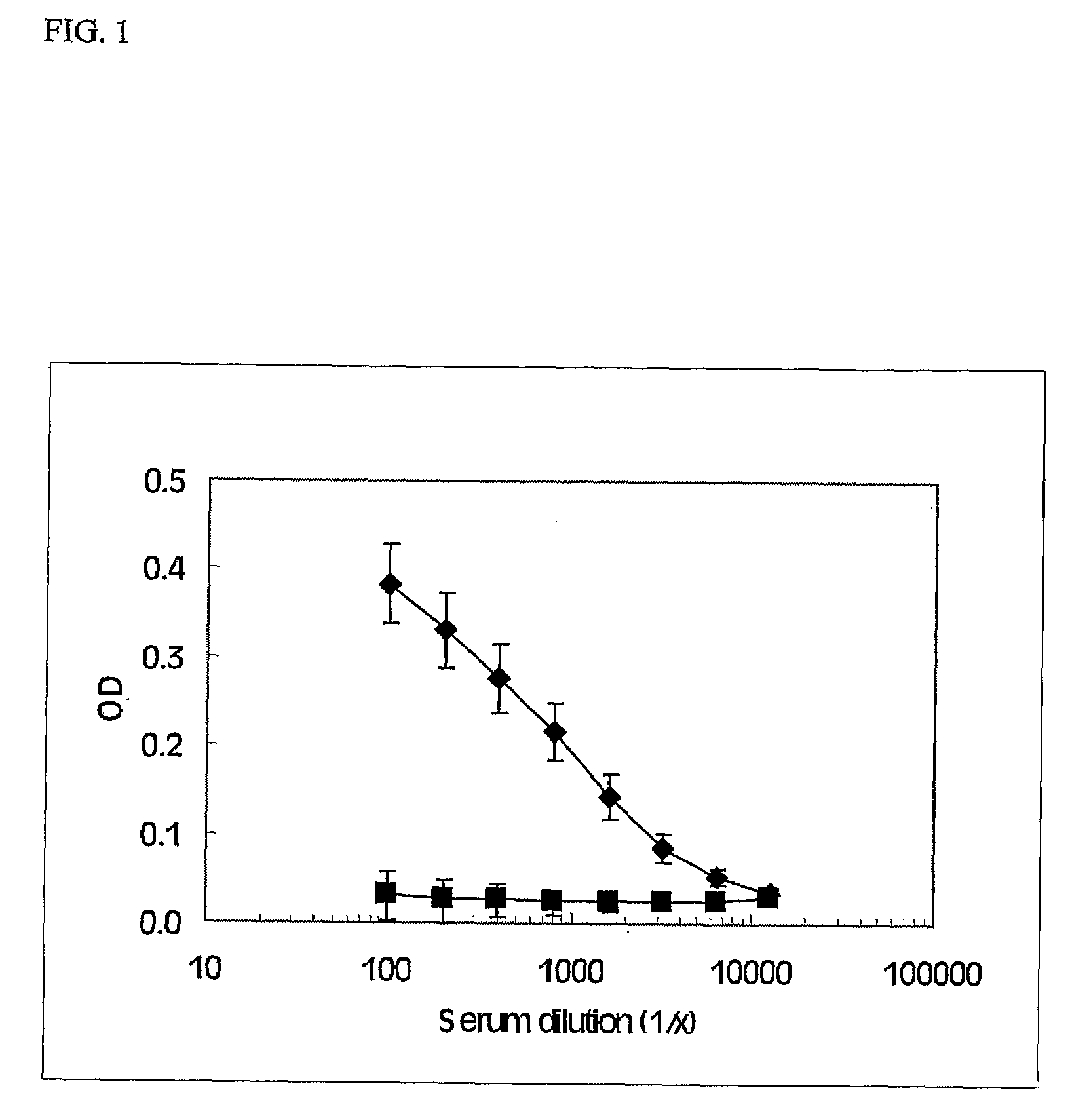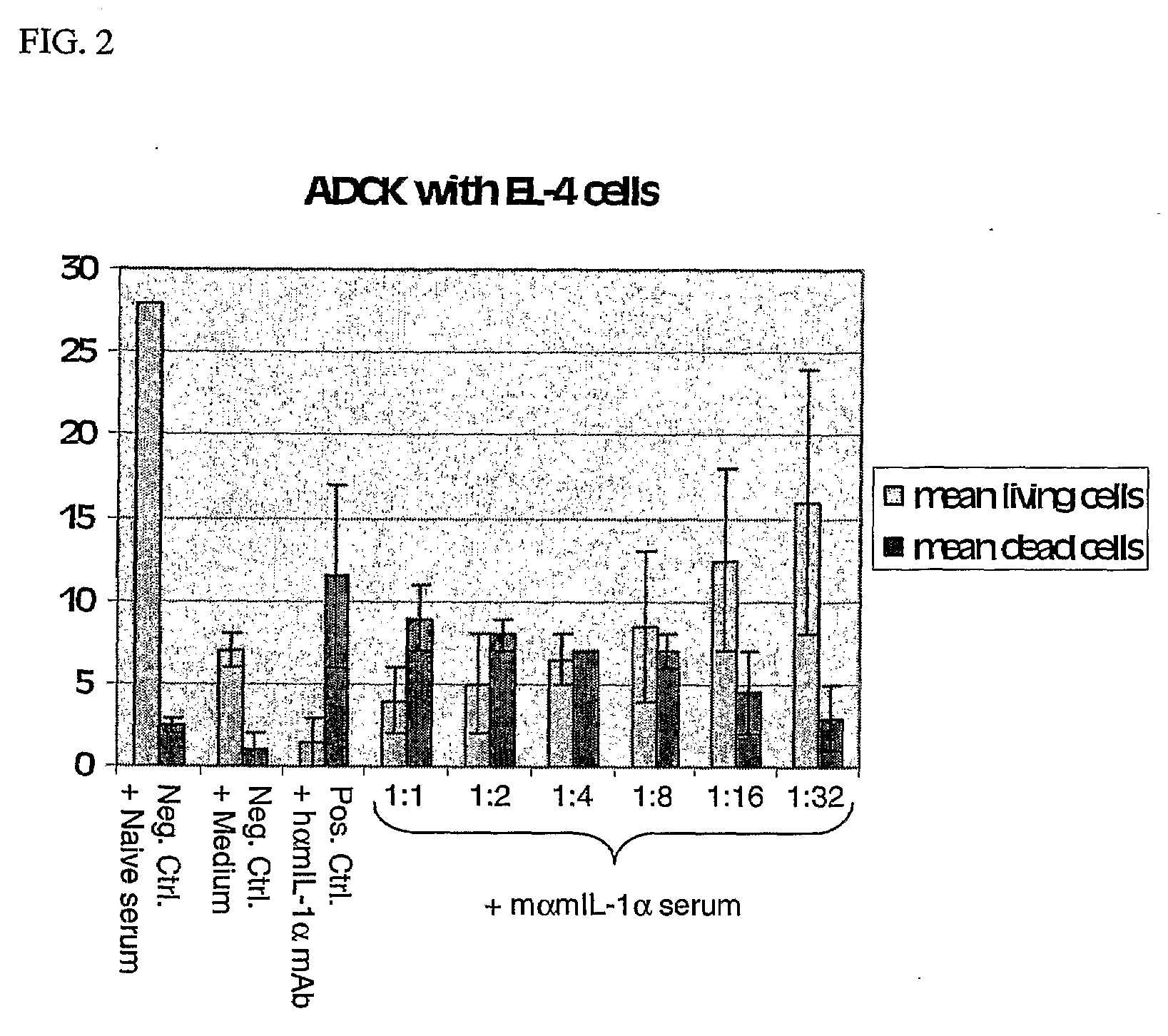IL-1alpha IMMUNIZATION INDUCES AUTOANTIBODIES PROTECTIVE AGAINST ATHEROSCLEROSIS
a technology of autoantibodies and immunization, which is applied in the direction of antibody medical ingredients, immunological disorders, peptide/protein ingredients, etc., can solve the problem of difficult to establish a causal link
- Summary
- Abstract
- Description
- Claims
- Application Information
AI Technical Summary
Benefits of technology
Problems solved by technology
Method used
Image
Examples
example 1
ApoE Knockout Mice
[0012]The ApoE− / − mice are obtained from Jackson Laboratory, Bar Harbor, Me. Only male animals are used to avoid possible influence of gender on the development of vascular lesions; moreover, clinical studies observing a protective role for IL-1α aAb in progression of atherosclerosis have been made, to this point, only in men. Ten week-old mice are used and fed a diet with high cholesterol content (1.25% cholesterol, 0% cholate; Research Diets, New Brunswick, N.J.). The mice are fed the diet for 10 weeks and then sacrificed. Blood is sampled and aortas are perfused, cut into parts, and either fixed or frozen according to standard methods.
example 2
Immunization with Murine IL-1α
[0013]Mice are immunized with murine IL-1α conjugated to purified protein derivative of tuberculin (PPD) at a ratio of 0.41 (w / w) according to the method described by Svenson et al., J Immunol Methods. 2000 Mar. 6; 236(1-2):1-8. Mice are inoculated with subcutaneous injections in the base of the tail. Inoculations are repeated three times, three weeks apart. To analyze IL-1α aAb, mice are bled from the retroorbital plexus 2 weeks after each injection. Control animals receive identical inoculation schedule with a PPD solution containing no IL-1α.
example 3
Assays
[0014]Mouse IgG responses to IL-1α are determined as described by Svenson et al., 2000. Saturation binding analysis of IL-1α to IgG is performed as described (Svenson et al., J Clin Invest. 1993 November; 92(5):2533-9). Identical samples are run in parallel on the protein G Sepharose columns and columns containing Sephadex G-75 superfine (Svenson et al., Cytokine. 1992 March; 4(2):125-33) to compare the 125I-IL-1α bound to serum IgG with the total binding to serum.
[0015]Cellular receptor assays are performed using the NOB-1 murine T cell line as described in Svenson et al., 2000. IL-1α RIAs and IL-6 ELISAs also are performed as described in Svenson et al., 2000.
[0016]In vivo induction of IL-6 is performed as described in Svenson et al., 2000.
PUM
| Property | Measurement | Unit |
|---|---|---|
| Cell angle | aaaaa | aaaaa |
Abstract
Description
Claims
Application Information
 Login to View More
Login to View More - R&D
- Intellectual Property
- Life Sciences
- Materials
- Tech Scout
- Unparalleled Data Quality
- Higher Quality Content
- 60% Fewer Hallucinations
Browse by: Latest US Patents, China's latest patents, Technical Efficacy Thesaurus, Application Domain, Technology Topic, Popular Technical Reports.
© 2025 PatSnap. All rights reserved.Legal|Privacy policy|Modern Slavery Act Transparency Statement|Sitemap|About US| Contact US: help@patsnap.com


